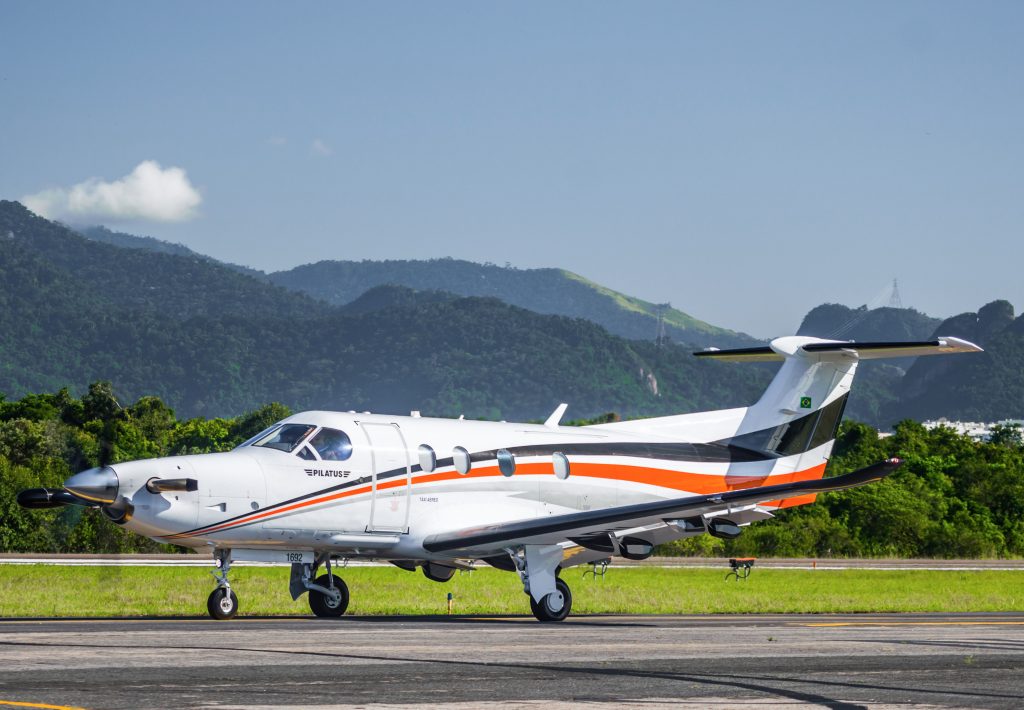Switch to:
 EN
EN  Português (PT)
Português (PT)  Español (ES)
Español (ES)
If on one hand the business aviation market in Brazil is beginning to slowly show signs of resuming growth, on the other there is much to celebrate worldwide. GAMA (the General Aviation Manufacturers Association) has just released the results for the first nine months of 2019.
The figures indicate that the delivery of executive jets in world aviation grew 15.4% compared to the same period last year. In 2019 (through September), 516 units were delivered, compared to 447 in 2018. Another segment of business aviation that showed prominent growth was piston aircraft, which recorded an increase of 12.3%. However, the turboprop area suffered. From January to September 2019, the market fell by 11.6%: 395 units in 2018 versus 349 in 2019.
In total, there were 1,742 executive planes in those three quarters, compared to 1,623 in the same period a year earlier, an increase of 7.3%. In figures, the result was also significant: $14 billion versus $12.8 billion in 2018.
These data indicate that 2019 is expected to record more significant results than 2018, when the number of global deliveries of general aviation grew 5%, from 3,293 in 2017 to 3,463 aircraft in 2018. This increase occurred in all types of aircraft in general aviation, with piston engines being the best-selling in volume (1,139); and turboprops, with the highest percentage increase (7%) in 2018.

The expressive numbers reflect the sale of larger jets, fleet renewal, and also the rise of new business models within the air taxi and shared ownership segments.
Brazilian market
General aviation is fundamental to the development of Brazil, as it establishes connections that boost business in the country’s 5,568 municipalities. Of these, less than 2% are served by commercial aviation, which shows the importance of private, executive, and regional aviation for the country. More than a leisure instrument, it functions as a key business tool.
According to the Brazilian Yearbook of Civil Aviation – 2019, currently, the Brazilian general aviation fleet has about 7,800 active aircraft and helicopters, of which are 610 jets, 1,130 turboprops, 1,160 helicopters, and approximately 4,900 aircraft with piston engines, distributed between passenger, cargo and air-service air taxis, private operators, flight instruction, and specialized air service providers.
With the country stagnating in recent years, general aviation has entered a troubled period. However, the segment showed growth in the fleet in some regions of Brazil such as the Central-west and Northeast, largely due to agribusiness. The market has also received new business models and investments in the executive aviation sector.

One of them is “shared” executive aviation, under the boutique airline model. By connecting airports (and helipads) unavailable in commercial aviation, companies like Flapper effectively increase the size of the industry and the use of aircraft capacity. Brazil has at least 20 airports that can be served by the “Premium” shared service (Pilatus, King Air, or Phenom) and more than 150 which can be connected to the regional aviation service based on the Caravan Grand or Twin Otter. Challenges for 2020 include integrating technology into the corporate travel market and seeking cost optimization. Examples of projects currently discussed by the Brazilian Association of Air Taxis and Aeronautical Product Maintenance include improved fuel tariffs, discounts on the importing of aircraft parts or the “individual air taxi” project, and facilitating some certification requirements for private owners.
It is worth noting that São Paulo is the state with the highest concentration of jets in the country, with 606 units in 2018, followed by Rio de Janeiro, with 177. São Paulo’s capital city concentrates the largest number of helicopters in the world, with more than 450 units, according to the Brazilian Association of Helicopter Pilots. With more than 25 helipads used in everyday life and the most modern fleet in the market, the city serves as the basis for companies trying to disrupt the existing sector (Flapper, Avantto, Voom), as well as traditional players, who invest heavily in the sector, such as Icon (taxi JHSF – Catarina Airport.
About the Author
Tiago Dupim is a market analyst at Flapper Tecnologia S.A., Brazil’s first on-demand executive aviation company. With more than 15 years of experience in the aeronautical sector, Tiago worked as a reporter, executive editor, and editor-in-chief of several magazines in the sector.
